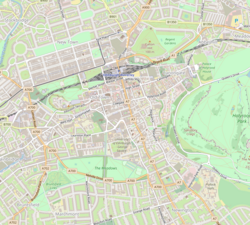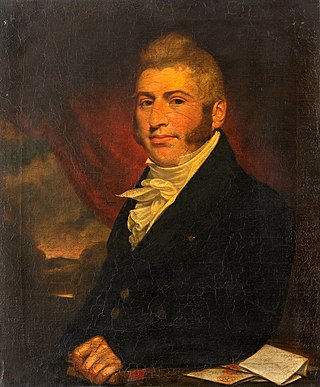
John Abercrombie was a Scottish physician, author, philosopher and philanthropist. His Edinburgh practice became one of the most successful medical practices in Scotland. The Chambers Biographical Dictionary says of him that after James Gregory's death, he was "recognized as the first consulting physician in Scotland". As surgeon to The Royal Public Dispensary and the New Town Dispensary he provided free medical care for the poor of the town and taught medical students and apprentices. He published extensively on medical topics and latterly on metaphysics morality and religion. A devout Christian, he gave financial support to missionary work. Abercrombie was awarded the honorary degree of MD from the University of Oxford, was elected Rector of Marischal College and University, Aberdeen and appointed Physician to the King in Scotland.

The Royal College of Surgeons of England is an independent professional body and registered charity that promotes and advances standards of surgical care for patients, and regulates surgery and dentistry in England and Wales. The college is located at Lincoln's Inn Fields in London. It publishes multiple medical journals including the Annals of the Royal College of Surgeons of England, the Faculty Dental Journal, and the Bulletin of the Royal College of Surgeons of England.

The Hunterian is a complex of museums located in and operated by the University of Glasgow in Glasgow, Scotland. It is the oldest museum in Scotland. It covers the Hunterian Museum, the Hunterian Art Gallery, the Mackintosh House, the Zoology Museum and the Anatomy Museum, which are all located in various buildings on the main campus of the university in the west end of Glasgow.
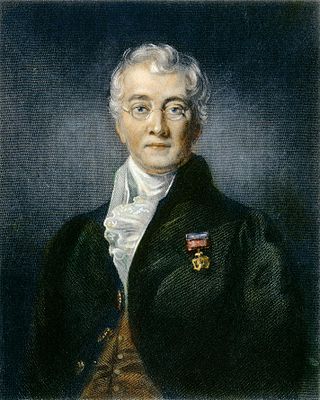
Sir Charles Bell was a Scottish surgeon, anatomist, physiologist, neurologist, artist, and philosophical theologian. He is noted for discovering the difference between sensory nerves and motor nerves in the spinal cord. He is also noted for describing Bell's palsy.
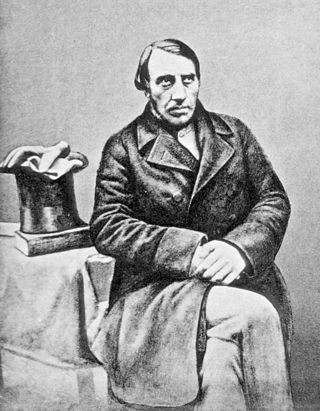
John Goodsir was a Scottish anatomist and a pioneer in the formulation of cell theory.

The Royal College of Surgeons of Edinburgh (RCSEd) is a professional organisation of surgeons. The RCSEd has five faculties, covering a broad spectrum of surgical, dental, and other medical and healthcare specialities. Its main campus is located on Nicolson Street, Edinburgh, centred around the 18th century Surgeons' Hall. The campus includes Surgeons' Hall Museums, a medical and surgical library, a skills laboratory, a symposium hall, administrative offices and a hotel. A second UK office was opened in Birmingham in 2014 and an international office opened in Kuala Lumpur, Malaysia, in 2018.
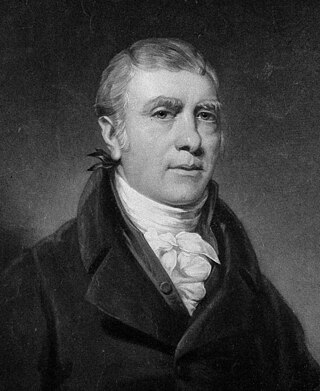
John Barclay was a Scottish comparative anatomist, extramural teacher in anatomy, and director of the Highland Society of Scotland.
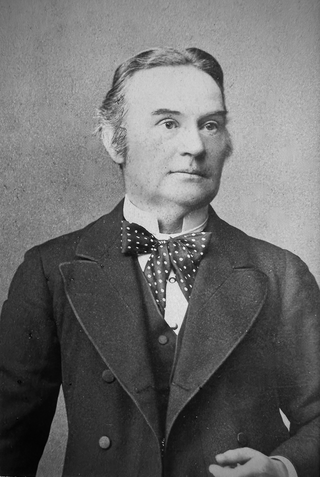
Thomas Annandale, FRCS FRSE (1838–1907) was a Scottish surgeon who conducted the first repair of the meniscus and the first successful removal of an acoustic neuroma, and introduced the pre-peritoneal approach to inguinal hernia repair. He served as Regius Professor of Clinical Surgery at the University of Edinburgh. His collection of anatomical specimens was donated to the Surgeon's Hall in Edinburgh and is now known as the Thomas Annandale Collection.

John Menzies Campbell FRSE FDS RCSEd, DDS was a Scottish dentist and dental historian who became a collector of dental books, paintings and dental instruments. At the time of his death he had amassed what was regarded as one of the largest collections of dental memorabilia in the world. He bequeathed his collection of pictures and instruments to the museum of the Royal College of Surgeons of Edinburgh (RCSEd) where it formed the Menzies Campbell Dental Museum, and is now known as the Menzies Campbell Collection. His books and dental advertisements were left to the Royal College of Surgeons of England (RCSEng).
David Middleton Greig FRSE FRCSE LLD TD was a Scottish surgeon who worked for most of his career at Dundee Royal Infirmary. He developed an interest in diseases of bone and came to be regarded as an international authority on the subject. He wrote numerous papers on skeletal abnormalities and Greig cephalopolysyndactyly syndrome is named after him. Over the course of his career he amassed a large collection of skulls demonstrating various bony abnormalities. After retiring from surgical practice he became conservator of the Museum of the Royal College of Surgeons of Edinburgh at Surgeons' Hall. He donated 250 skulls to Surgeons' Hall Museum, where some remain on display as part of the Greig Collection.

Charles Walker Cathcart, was a Scottish surgeon who worked for most of his career at the Royal Infirmary of Edinburgh (RIE). As a young man he had represented Scotland at rugby on three occasions. During the First World War he jointly published an account of the value of sphagnum moss as a wound dressing which led to its widespread use by the British Army for that purpose.

Robert Nasmyth FRCSEd, FRSE was a Scottish dental surgeon from Edinburgh who was Surgeon-Dentist to Queen Victoria in Scotland. He was President of the Odonto-Chirurgical Society of Scotland and was one of the founders of the Edinburgh Dental Dispensary, which would evolve into the Edinburgh Dental Hospital and School.
The Triple Qualification (TQ) was a medical qualification awarded jointly by the Royal College of Surgeons of Edinburgh, the Royal College of Physicians of Edinburgh and the Faculty of Physicians and Surgeons of Glasgow between 1884 and 1993. Successful candidates could register with the General Medical Council (GMC) and practise medicine in the United Kingdom. It was a route used by international medical graduates and those unable to gain entry to university medical schools, which included women in the late 19th century and refugee medical students and doctors throughout the 20th century.

Arthur Logan Turner FRCSEd FRSE LLD was a Scottish surgeon, who specialised in diseases of ear, nose and throat (ENT) and was one of the first surgeons to work at the purpose-built ENT Pavilion at the Royal Infirmary of Edinburgh. During his surgical career he published a series of clinical papers and wrote a textbook of ENT surgery which proved popular around the world and ran to several editions. After retiring from surgical practice he pursued his interest in the history of medicine writing a biography of his father and histories of the Royal Infirmary of Edinburgh and the University of Edinburgh. As his father had been before him, he was elected President of the Royal College of Surgeons of Edinburgh. His collection of pathological specimens was donated to Surgeon's Hall Museum in Edinburgh..
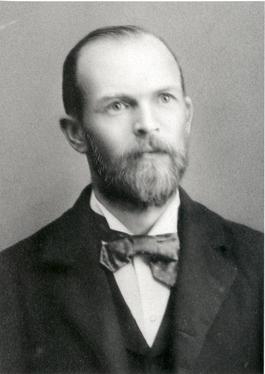
William Keiller was a Scottish born anatomist who trained in anatomy at the Edinburgh Extramural School of Medicine and was appointed as the first Professor of Anatomy at the University of Texas Medical Branch (UTMB) at Galveston, a post he held for 40 years. He served as Dean of the UTMB Medical School and as President of the Texas Medical Association. Many of his anatomical drawings and paintings are preserved and displayed at the Blocker History of Medicine collection at UTMB Moody Medical Library.
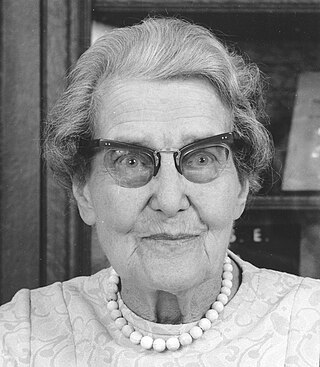
Edith Kate Dawson MBE FRCSEd FRCPEd (1886–1983) was a pathologist who received a DSc for a thesis on sarcoma in 1970 and an MBE in 1968. Dawson carried out her research at both the Royal College of Surgeons of Edinburgh and the Royal College of Physicians of Edinburgh.

James Alexander Ross MBE, FRCSEd was a Scottish surgeon awarded the MBE for his service in the Second World War. He was a leading member of the surgical team which, in 1960, carried out the first successful kidney transplant in the United Kingdom. He served as president of the Royal College of Surgeons of Edinburgh.

John Campbell was a Scottish surgeon. He served as president of the Royal College of Surgeons of Edinburgh from 1832 to 1834. In that capacity he was the last president of the College to sit ex officio as a member of the Edinburgh Town Council, so ending a tradition dating from 1583. During his presidency the College made the most significant change of location in its history, moving from Old Surgeons Hall in Surgeons' Square to the present Playfair building in Nicolson Street.

John William Struthers FRCSEd was a Scottish surgeon. During World War I he served as a major in the Royal Army Medical Corps and was awarded the Serbian Order of St Sava. During his career in Edinburgh he became an early user of local anaesthetic techniques in general surgery and wrote a highly regarded booklet on the topic. He was elected President of the Royal College of Surgeons of Edinburgh (RCSEd) from 1941 to 1943.
Extramural medical education in Edinburgh began over 200 years before the university medical faculty was founded in 1726 and extramural teaching continued thereafter for a further 200 years. Extramural is academic education which is conducted outside a university. In the early 16th century it was under the auspices of the Incorporation of Surgeons of Edinburgh (RCSEd) and continued after the Faculty of Medicine was established by the University of Edinburgh in 1726. Throughout the late 18th and 19th centuries the demand for extramural medical teaching increased as Edinburgh's reputation as a centre for medical education grew. Instruction was carried out by individual teachers, by groups of teachers and, by the end of the 19th century, by private medical schools in the city. Together these comprised the Edinburgh Extramural School of Medicine. From 1896 many of the schools were incorporated into the Medical School of the Royal Colleges of Edinburgh under the aegis of the RCSEd and the Royal College of Physicians of Edinburgh (RCPE) and based at Surgeons' Hall. Extramural undergraduate medical education in Edinburgh stopped in 1948 with the closure of the Royal Colleges' Medical School following the Goodenough Report which recommended that all undergraduate medical education in the UK should be carried out by universities.

